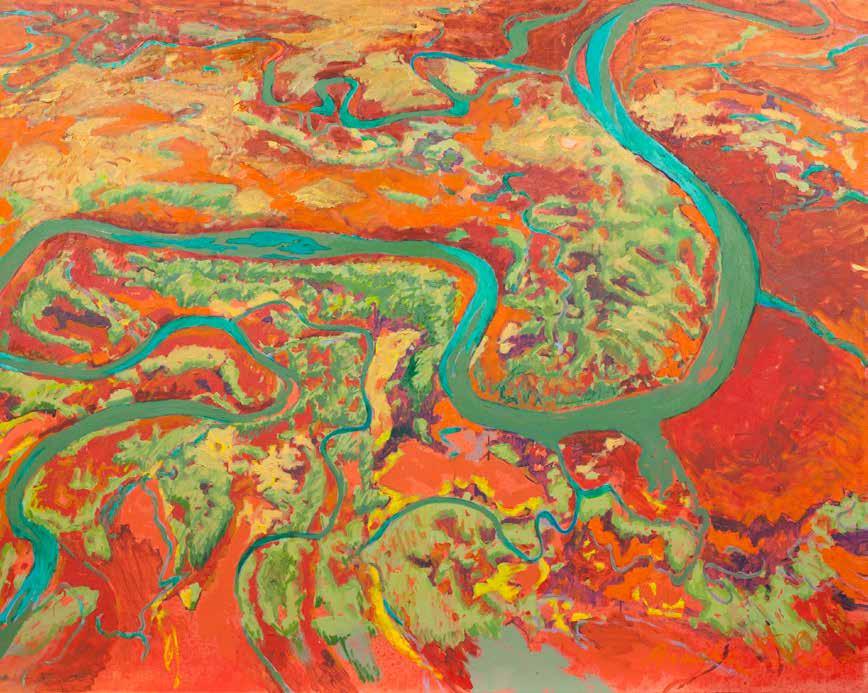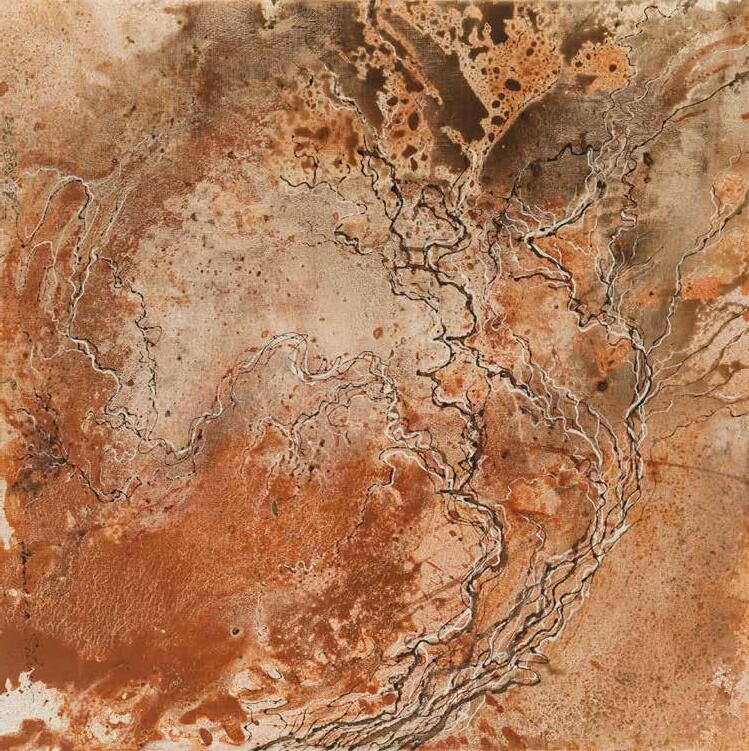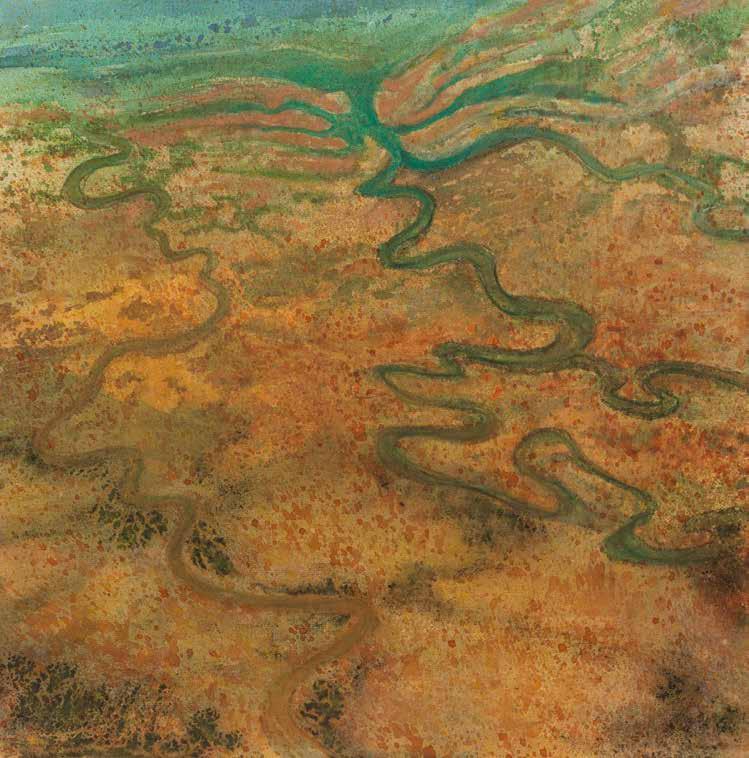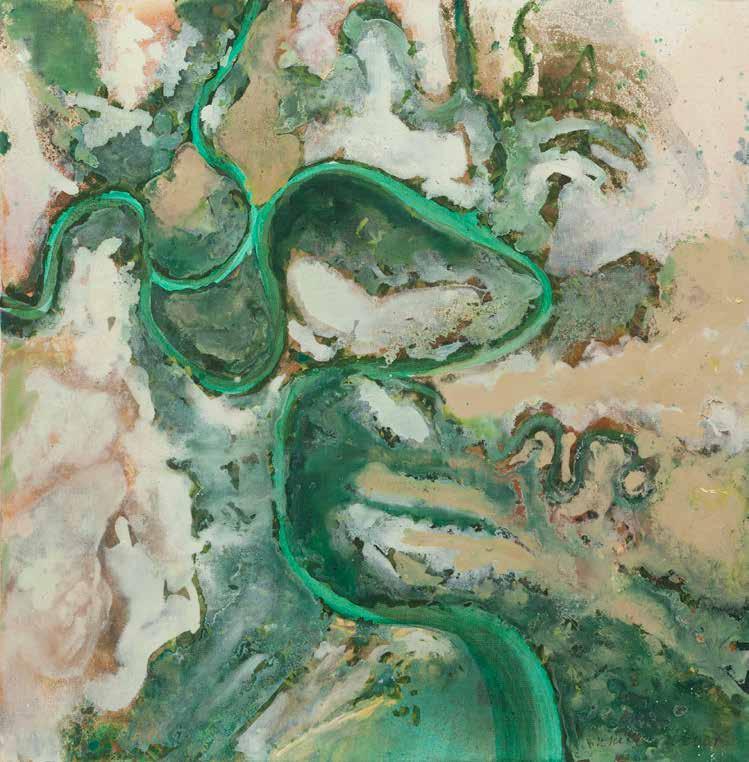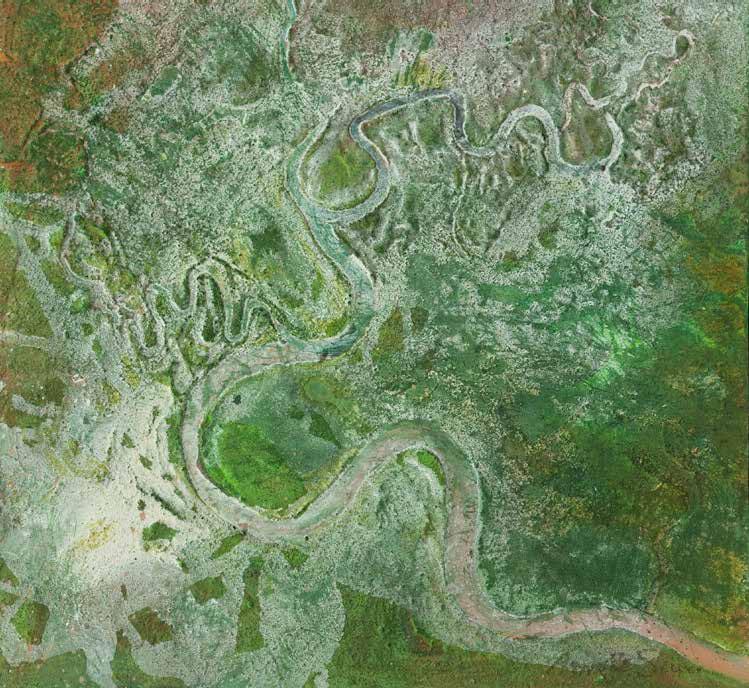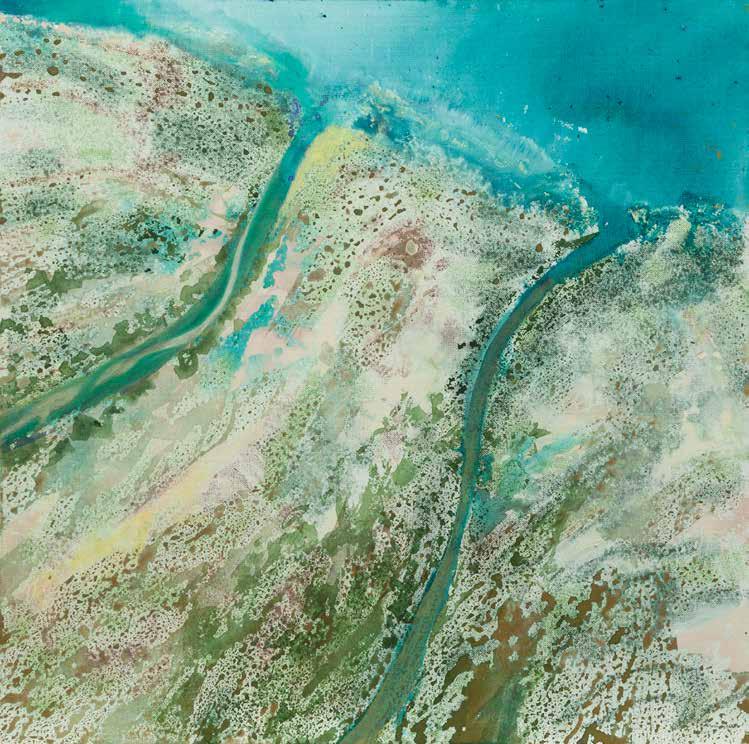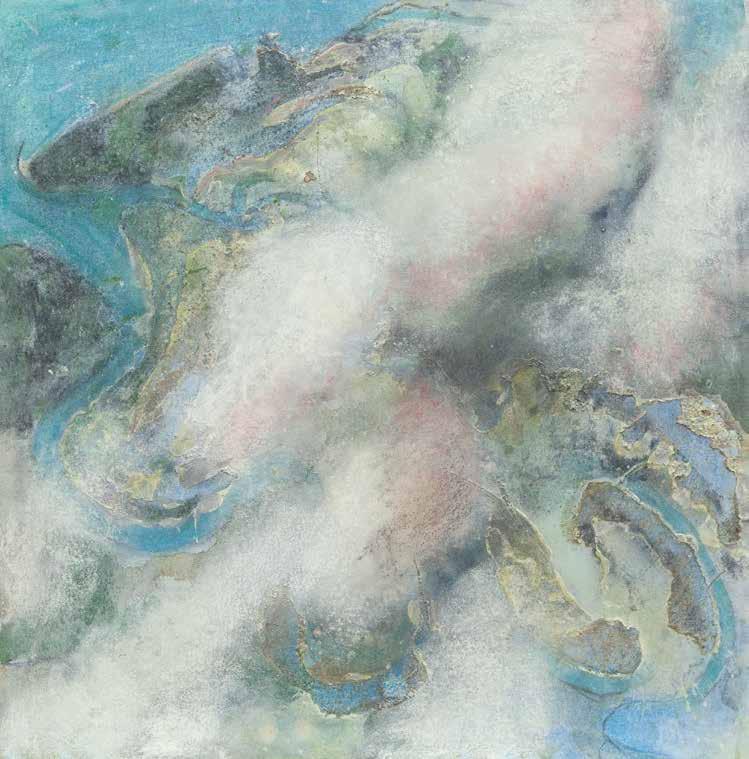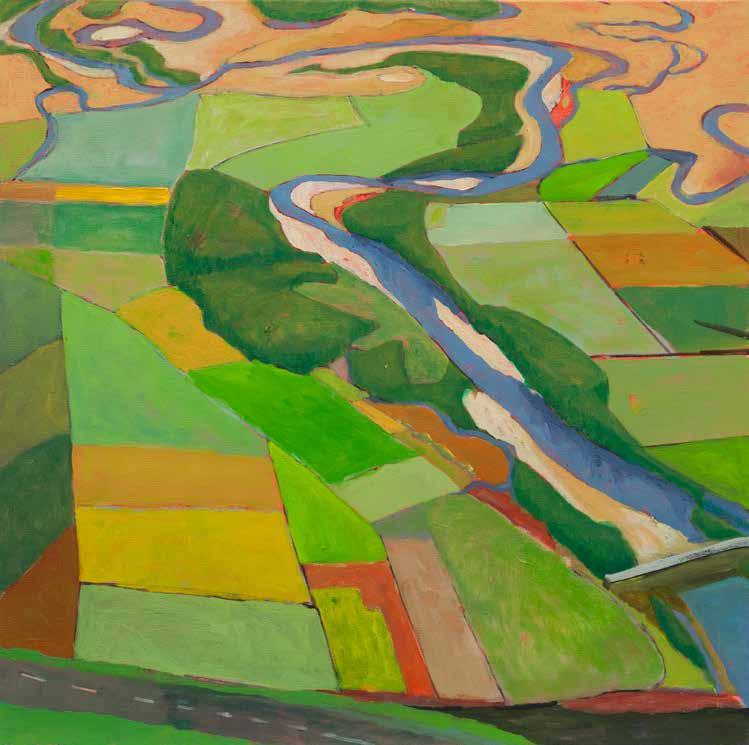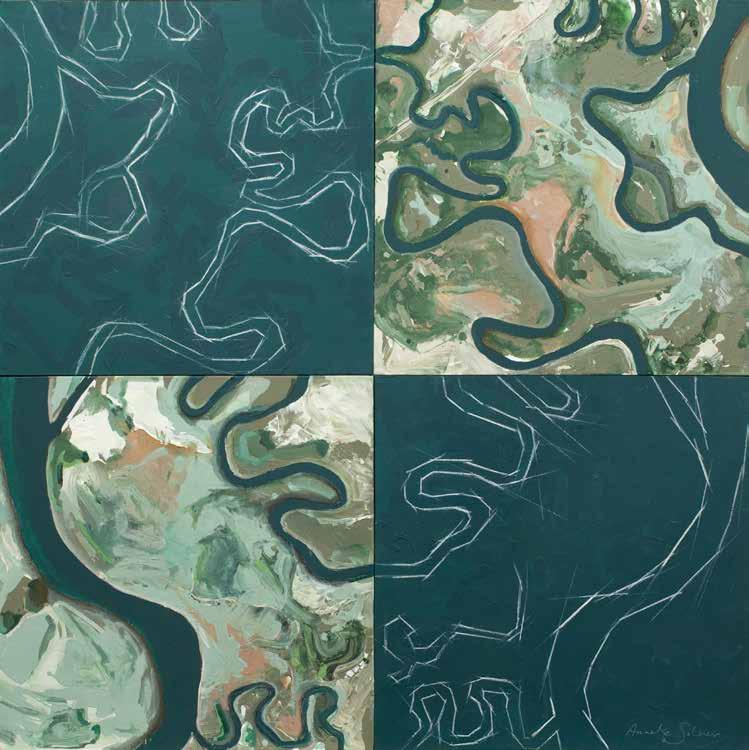
PERC TUCKER REGIONAL GALLERY
Publisher Gallery Services
Gallery Services, Townsville City Council
PO Box 1268
Townsville Queensland, 4810 Australia
ptrg@townsville.qld.gov.au
©Gallery Services, Townsville City Council and the authors 2016
ISBN: 978-0-949461-12-4
Organised by Gallery Services
Shane Fitzgerald Manager Gallery Services
Eric Nash Curator
Erwin Cruz Exhibitions and Collection Coordinator
Louise Cummins Education and Programs Coordinator
Rob Donaldson Digital Media and Exhibition Design Coordinator
Jo Stacey Team Leader Administration Gallery Services
Holly Grech-Fitzgerald Collections Management Officer
Carly Sheil Digital Media and Exhibition Design Officer
Dianne Purnell Digital Media and Exhibition Design Fellow
Sarah Welch Public Art Officer
Leonardo Valero Exhibitions Officer
Rurik Henry Exhibitions Officer
Jess Cuddihy Education and Programs Officer
Sarah Reddington Education and Programs Assistant
Wendy Bainbridge Administration Officer
Ruth Hughes Administration Officer
Danielle Berry Arts Officer
Damian Cumner Gallery Assistant
Jillian Macfie Gallery Assistant
Denise Weightman Gallery Assistant
Published on the occasion of
Perc Tucker Regional Gallery
1 April - 1 May 2016
Project Manager
Shane Fitzgerald
Publication Design and Development
Rob Donaldson / Eric Nash / Shane Fitzgerald
Acknowledgements
Gallery Services would like to acknowledge the efforts of the artist, Anneke Silver, and Townsville City Council in realising this exhibition and supporting publication.
All artworks have been photographed by Shane Fitzgerald unless otherwise stated.
Studio shot by Dr. Robert Preston.
Cover Image
Anneke SILVER
Banking over flood plain 2015
Mixed media on canvas
61 x 61 cm
(07) 4727 9011
ptrg@townsville.qld.gov.au
www.townsville.qld.gov.au @TCC_PercTucker
PercTuckerTCC
Contact Perc Tucker Regional Gallery Cnr. Denham and Flinders St Townsville QLD 4810 Mon - Fri: 10am - 5pm Sat - Sun: 10am - 2pm
FOREWORD 6 Shane Fitzgerald, Manager Gallery Services SACRED RIVERS 8 Eric Nash, Curator Gallery Services ARTWORKS 15 CONTENTS
SACRED RIVERS
Widely celebrated North Queensland artist… Admirer and champion of our unique natural environment… The hibiscus personified, yearning for an escape from the confines of ‘the indoors’… Educator, nurturer, and eternal source of encouragement for peers and students… To Anneke Silver, all of these descriptions and more can be attributed, though no list will comprehensively surmise her contribution to the region’s arts community. What can be stated simply and concisely, however, is that Perc Tucker Regional Gallery is fortunate to be able to present a new body of work by the artist, entitled Rivers un-cut, for the people of Townsville in 2016.
Painted over the course of three years, the river provides not only a unifying theme for these new works, but also a fitting metaphor for the artist’s career – and particularly this series.
The river in its most beautiful form – un-cut, without interruption or diversion by human interference – finds its own way. It majestically sweeps through the landscape, searching towards something bigger than itself; no two rivers are the same.
And so it is with the works within this exhibition. No two works are the same. While distinct series are evident, Silver’s passion for exploring the landscape extends to the canvas, where she exuberantly veers from a single stylistic channel, following the natural course of her artistic instinct. While the exhibition contains works that have been treated in a great diversity of styles (indeed the artist comments that she has utilised “every medium a studio and hardware store can provide” 1), they all flow in the same direction towards a celebration of our landscape, its shapes, “immense patterns and aesthetics.” 2
Perhaps Frances Thomson, former Director of Perc Tucker Regional Gallery, summed up the artist’s diverse yet consistent output best when writing for her 2006 exhibition, un-framing;
Silver’s practice is divergent, moving through distinct periods and styles, indicative of her receptivity to, and voracious appetite for ideas. This competency across a range of areas has resulted in an eclectic approach to style.
8
There is one constant in Silver’s oeuvre, however, and that is her reverence for the natural environment. Whether her work is expressive, figurative or representational, all pay homage to nature. Living in north Queensland with its fecund landscapes is necessary to sustaining this artist spiritually and philosophically. 3
In Rivers un-cut, the artist regularly crosses the river from realism to the more experimental footing of abstraction (or at least what may appear abstract to those of us less familiar with the chosen aerial perspectives). She drifts, not firmly planted on either bank, explaining;
Working with imagery that sits on that edge between abstracted pattern and landscape has given rise to a whole lot of experimentations in approach, use of media, and angle of vision... I had to look at abstract expressionism, at gesture, colour, and texture. I agree with Roy Churcher that every subject and situation demands a different treatment (my whole career has been an example of that...). For me every painting is a new adventure and it will go wherever it wants to go. 4
Her artistic homage to nature is also an invitation to view the landscape in all its glory, as she does; to consider its beauty from every vantage point and to challenge the one point perspective of our traditional landscape vision, dating back to the Renaissance.
The term un-cut also underlines the artist’s belief in the perils of framing or compartmentalising the expansive beauty of our natural landscape. Key works in Rivers un-cut highlight Silver’s considered use of scale to attempt to capture such a grand landscape. The artist’s appreciation of this grandeur came into acute focus during her early explorations of the northern and western Queensland landscape with husband Eddy. Ross Searle wrote of Silver’s experience;
Camping out and sleeping on the ground out in the vast, flat undulating country around Richmond and the strange, stumpy hills near Mt Isa…Lying beneath the stars under an expanse of Sky, Silver recounts the strong sensation of having to cling to the warm earth for fear of being spun into space. 5
9

Rivers un-cut includes familiar landscape views that are closely linked to what we could term the ‘traditional landscape’, and from there the artist takes us on a journey upwards. The gradual increase in elevation depicted in Silver’s works reveal to us a less familiar but awesomely beautiful glimpse of the rivers in the North Queensland environment.
These mid-flight and complete aerial depictions of river systems allow us to begin to comprehend the shapes and contours of the land and its relationship with the flow of water; perspectives we can begin to appreciate while sitting in the window seat during take-off and descent – visions long understood by Australia’s Indigenous peoples. From above, the artist explains that we can more easily view the way our creeks and rivers;
…twist and wriggle their way to the sea with complete abandon, turning back on themselves and curling this way and that... Mother Nature’s scribble pad –the madder the better – shaping not only their own course but also what happens around it. Salt deposits, mangroves and mudflows all turn into meaningful patterns from the air tracing the flow and energy of water... What intrigues me about this unusual point of
view is that it changes the traditional view of landscape into a feast of shapes and colours. In this exhibition I want to show the magnificence of the flow and energy. I want to make these patterns visible to all and celebrate this vision of the land. 6
Beyond presenting a range of familiar and more challenging views of rivers, Silver also considers the different ways people have viewed rivers due to the experiences they bring to them. This is particularly evident in the major work, Viewpoints / Points of View, which is in a sense a “three step history of Australia told through landscape.” 7
This five panel painting begins with the beauty of the undisturbed landscape – the “land as it is and always was” 8 The colour palette for this particular panel is important, as it links closely to two narrower panels that punctuate the work. These two panels include “names of Indigenous languages relating roughly to the areas which most inspired these works.” 9 Though the artist is quick to point out it is far from a conclusive list of the language groups, the intent is to pay tribute to the traditional custodians of the land, their connection to country and understanding of it.
Image left:
Trickle running wide [detail] 2015
Mixed media on canvas
90 x 90 cm
11
The central panel of the work is intended to capture the age of ‘discovery’. The colour palette is again of significance, with the river and land rendered in Delft blue and white, in reference to Abel Tasman’s 1644 voyage, and also to the fine porcelains of the Chinese explorers who came across the land before him. In this, Silver is commenting on the manner in which explorers’ views of Australia were culturally coloured by their sense of ‘discovery’ of a land that was already inhabited.
The colour in the final panel also is a key to its concept -- not the era of discovery but our need to claim ownership of the land. In this case the colour refers to old maps and contains a subtle grid. The artist laments our blindness to the natural shapes and our thirst for “dividing land into rectangles so it can be owned and treated as a commodity.” 10 This “vision is detached, dispassionate, calculating and categorising.”
11 Because much of the land was divided into the sheep grazing leases, the artist carried out the segmenting by using black wool.
Having viewed the works that form Rivers un-cut, and being aware of the affection with which the artist is held, I am left in little doubt that viewers will be enamoured with Silver’s most recent suite of paintings. That said, the true measure of
success for the artist will be for admirers of her works to then appreciate the beauty of the landscape beyond the confines of the stretched canvas, as I found myself doing on a recent flight to the Gold Coast.
Prompted by the artist’s works and her total understanding of the majesty of our winding rivers from above, I found myself staring out the window; not drifting amongst the clouds as is my usual state, but looking intently down, following the flow of the water as it traversed and hugged flat, earthy terrain and rolling hills alike.
Silver’s keen interest in this aerial view of our landscape stems back to her Aerial series of the early 1970s; abstract works influenced by the CoBrA movement 12 which more pointedly interrogated urbanisation and the ceaseless sprawl of our footprint on nature. Silver has previously lamented this “visual clutter,” 13 and our encroachment on the shapes of nature is again touched upon in Rivers un-cut, particualrly evident through works such as Encroached and Hemmed In.
In interrogating human encroachment on nature, the artist has always sought to draw our attention to the sanctity of the land.
Image right:
Hemmed in [detail] 2015
Oil on canvas
61 x 61 cm
12

Writing for the major publication Images of the Goddess and Nature Mysticism, Ross Searle observed how this influenced the creation of Silver’s Bush Icons works of the early-mid 1980s;
From the very beginning Silver’s artistic concerns in Australia related to her notion of the sacredness of Nature…The ‘ikon’ title referred to the enduring quality Silver felt about the landscape. 14
In these gold leafed panels she replaced the traditional religious imagery in icons with shapes of the natural bush environment.
Overall, Rivers un-cut evokes a more celebratory mood than any lamentation – the artist’s encouragement of more widespread appreciation of the natural landscape taking precedence (and perhaps this is also a means to advocate for less human interference with the land, delivering her message with the carrot rather than the stick.)
Silver’s love affair with Queensland’s, and particularly North Queensland’s rivers, was perhaps piqued by her Dutch heritage, but has endured throughout her life;
Interview with the artist, Anneke Silver, in her home studio – Thursday 4 February 2016.
Interview with the artist, Anneke Silver, in her home studio – Thursday 4 February 2016.
Thomson, F 2006, un-framing: recent work Anneke Silver, Perc Tucker Regional Gallery, Townsville, QLD.
Silver, A 2016, Rivers un-cut, exhibition brief.
Magon, J and Searle, R 1995, Anneke Silver: Images of the Goddess and Nature Mysticism, Craftsman House G+B Arts International in association with Perc Tucker Regional Gallery, Townsville, QLD.
Silver, A 2016, Rivers un-cut, exhibition brief.
Interview with the artist, Anneke Silver – Thursday 10 March 2016.
Interview with the artist, Anneke Silver, in her home studio – Thursday 4 February 2016.
Silver, A 2016, Rivers un-cut, exhibition brief.
Interview with the artist, Anneke Silver, in her home studio – Thursday 4 February 2016.
Heidegger, Martin, ‘The Age of the World Picture,’ in The Question Concerning Technology trans. a an
Growing up in a country (the Netherlands) where every bit of water is hemmed in by levee banks, dikes, where curves are straightened and water levels are controlled by locks and weirs, it is a complete pleasure to me to witness this entirely natural flow un-interrupted – un-cut! This exhibition is the result of a life time of exploring rivers, creeks and gorges mostly in North Queensland. I have looked at them from aeroplanes, from the ground or half way up. I have seen them from a boat, or swam in them before crocs re-appeared. I have mused on the ways in which these landscapes are seen and wonder if anybody really cares about the beautiful shapes the rivers have.15
This most recent exhibition by one of North Queensland’s most accomplished artists is just the latest triumph in a career spent sharing her love for the land through her paintings. Audiences who visit Rivers un-cut will undoubtedly drift, as I did, through this diverse collection and feel the artist’s genuine connection to this country, and moreover grow a greater appreciation for the aesthetics of our river systems beyond the common vista view.
Eric Nash Curator, Gallery Services
artifact available for appropriation nd ed. W. Lovitt (New York: Harper and Row, 1977).
The name of the movement CoBrA is derived from the French names of the cities of Copenhagen, Brussels and Amsterdam. The artists who founded the CoBrA group during a major international conference held in Paris in 1948 came from these three European capitals. A curled snake became the symbol of the movement. The CoBrA artists painted directly and spontaneously. Just like children, they wanted to work expressively without a preconceived plan, using their fantasy and much colour. They rebelled against the rules of the art academies and aimed at a form of art without constraint. They also explored working with all kinds of materials: the experimental was paramount. Source: www.saatchigallery.com
Silver, A 2008, Anneke Silver: Linked Landscapes, Cairns Regional Gallery, Cairns, QLD.
Magon, J and Searle, R 1995, Anneke Silver: Images of the Goddess and Nature Mysticism, Craftsman House G+B Arts International in association with Perc Tucker Regional Gallery, Townsville, QLD.
Silver, A 2016, Rivers un-cut, exhibition brief.
14
1 2 3 4 5 6 7 8 9 10 11 12 13 14 15








